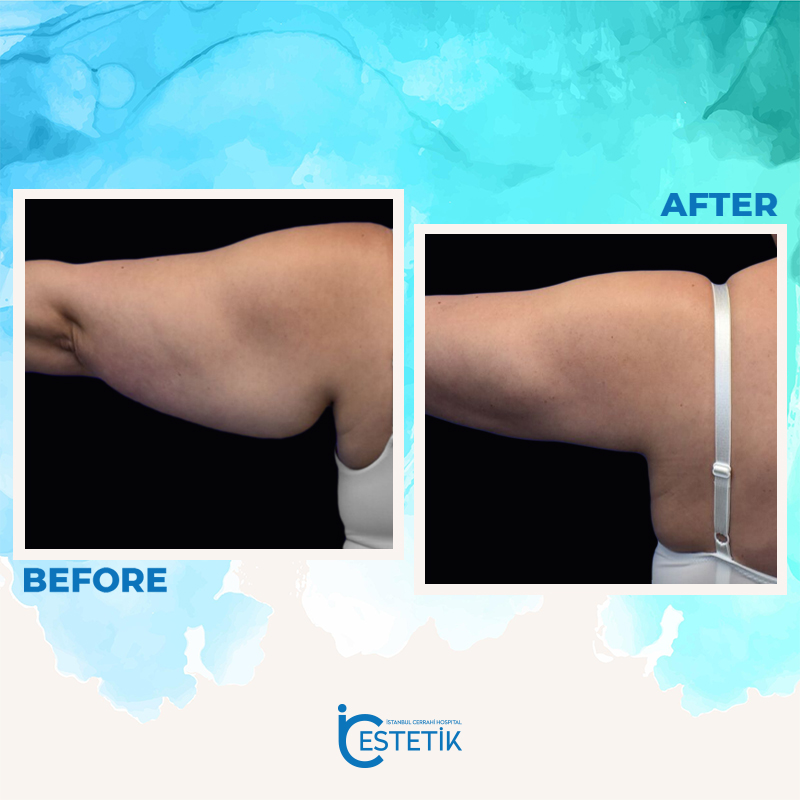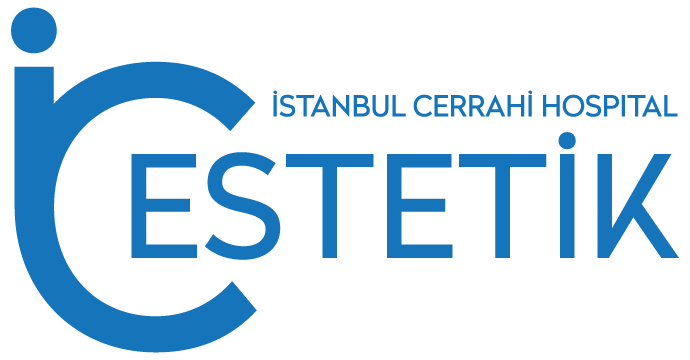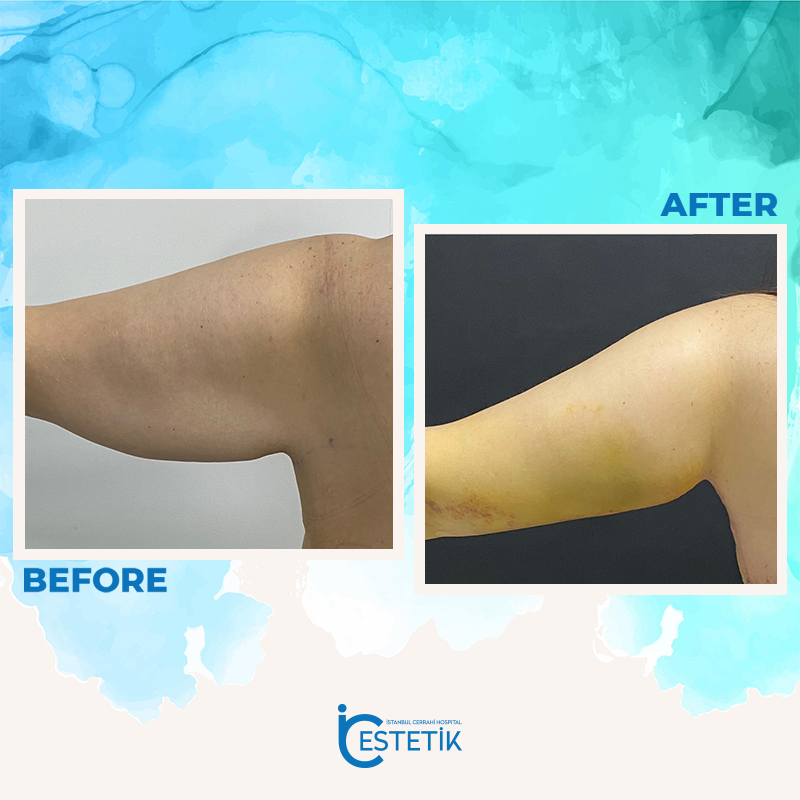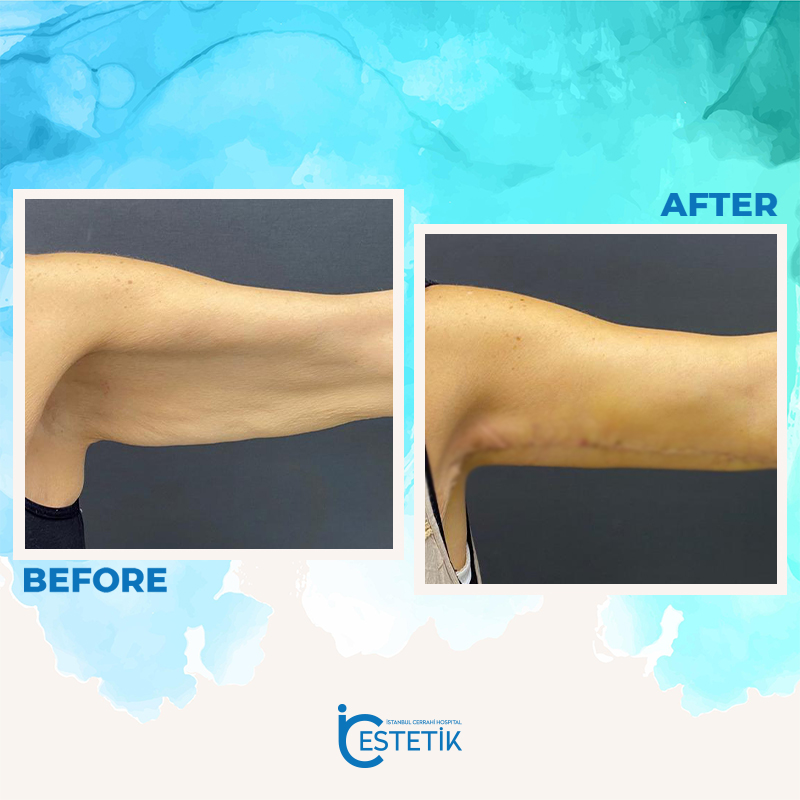Arm Lift
This procedure, commonly referred to as brachioplasty or an arm lift, is a cosmetic surgery that aims to enhance the tone and definition of the upper arms. It achieves this by:
- Eliminating localized pockets of fat.
- Removing excess skin.
- Tightening the underlying supportive tissue.
- Smoothing the remaining skin for a more contoured appearance.
Who is this procedure for?
Brachioplasty surgery, also known as an arm lift, can be beneficial if you have drooping or sagging upper arms, often characterized by a batwing-like appearance when raising your arms.
Common reasons for this condition include:
- Age-related changes in skin elasticity.
- Significant weight loss, whether through conventional methods or bariatric surgery, coupled with a healthy lifestyle.
- Genetic factors that contribute to skin laxity.
- Lymphedema.
- During a brachioplasty procedure, excess skin and fat are removed, and the underlying tissues are tightened to achieve a more toned and youthful appearance in the upper arms.
Arm Lift Procedure
If you decide to undergo brachioplasty surgery, here is what you can expect:
Medication for comfort: You will be given medication to ensure your comfort during the procedure. This may involve general anesthesia, which will put you to sleep and block any sensation, or a local anesthetic to numb the surgical area and help you relax.
Incision placement: Surgeons will make an incision on the inside or back of your arm. The size and length of the incision will depend on the extent of the procedure and your specific needs.
Removal of excess skin and fat: The surgeon will remove excess skin by cutting it away and may also perform liposuction to remove excess fat if necessary.
Tightening of supportive tissue: Stitches (sutures) will be used to tighten the supportive tissue in the arms, helping to achieve a more toned and lifted appearance.
Incision closure and bandaging: The surgeon will close the incision with sutures and apply sterile gauze bandages to the treated area. This helps reduce the risk of infection and promotes proper healing.
Arm Lift FAQs
Can exercise be a substitute for arm lift surgery?
Exercise, particularly resistance training and muscle toning exercises, can help improve the overall appearance and tone of the upper arms by building muscle. However, exercise alone cannot tighten loose skin or remove excess skin and fat. If sagging skin and excess fat are significant concerns, an arm lift surgery may be necessary to achieve the desired results.
How long does the result of an arm lift last?
The results of an arm lift surgery can last for a decade or more, provided that you maintain a stable weight and follow a healthy lifestyle. The procedure removes excess skin and fat, resulting in tighter and more defined arms. While aging and natural changes in the body may affect the long-term results, your arms will generally remain firmer compared to if you had not undergone the arm lift surgery.
Is an arm lift a painful procedure?
Discomfort and mild to moderate pain are common in the early stages of arm lift recovery. Bruising, swelling, redness, and discomfort can be expected during the first week or two after the surgery. Pain medications prescribed by your surgeon can help manage any discomfort during this initial healing period.
Does an arm lift leave a noticeable scar?
Arm lift surgery involves incisions, and as with any surgical procedure, some scarring is inevitable. The incision lines for a bilateral arm reduction surgery (brachioplasty or arm lift) are typically long and may run along the inner arm. However, skilled surgeons make efforts to minimize scarring and place incisions in discreet locations. Over time, scars tend to fade and become less noticeable.
What can I expect during the arm lift recovery period?
After an arm lift surgery, your arms will be bandaged and wrapped, limiting your range of motion and certain activities. You may experience increased pain and pressure near the incisions, particularly when moving your arms. The arm muscles may feel sore, and bruising and swelling are expected. Following your surgeon’s post-operative instructions and taking prescribed medications can help manage discomfort and promote proper healing.




